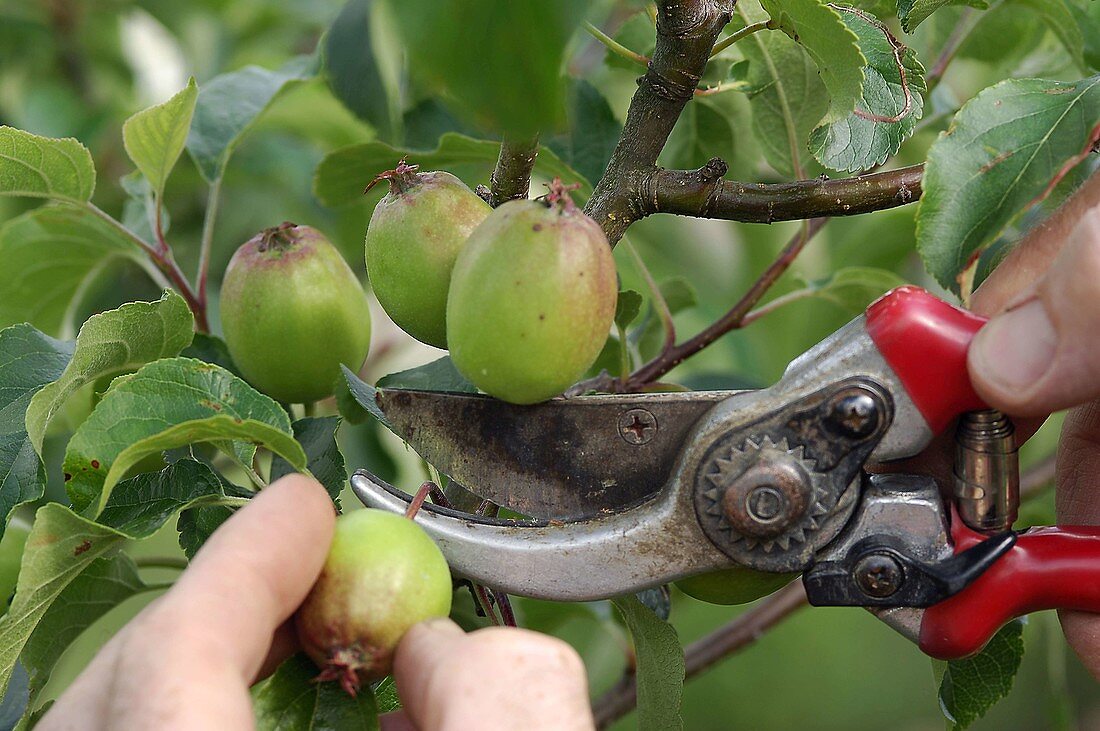Less is More: thin your fruit crops for bigger, better results
This winter and spring, we have had perfect weather for fruit trees, seeing huge bouquets of blooms on pears, peaches, apples, plums & more! If you’re very lucky, you might have a fruit tree loaded with tiny little fruits right now. For your own good, you need to go outside and pick most of them off right now…we mean it. We know it sounds counterintuitive, but thinning fruit is an essential process if you wish to harvest high-quality fruit.
Fruit trees often set more fruits than they are able to support, which leads to one of two outcomes.
1) the tree is unable to put enough resources into each fruit, resulting in many small fruits with little to no flavor
2) the tree gets really stressed out from the demand, and it drops all the fruit before any of it ripens
You must remove some of the young fruits to create a crop load your tree can fully ripen without undue stress.
There are no concrete rules on how much to thin. In general, the smaller/younger a tree is the less fruit it should be allowed to ripen. Thin, tight clusters of fruit or just one fruit, remove fruit so there is only one every 6” or so along each stem. Feel free to play with these rules & see the results for yourself. Trial & error is a critical part of gardening.
Thinning is a great opportunity to remove inferior fruits; toss fruit that shows any kind of damage or are of below average size. If you can’t reach all the fruits by hand, give the trunk a good shake, a little bit at a time. Even this simple technique can make a difference on a tree that is overloaded with fruit.
Maintaining a smaller fruit tree makes thinning easiest. Stop by our Home & Garden Showplace to get a copy of the book “Grow a Little Fruit Tree” by Ann Ralph for a clear, concise guide to all things fruit trees.

